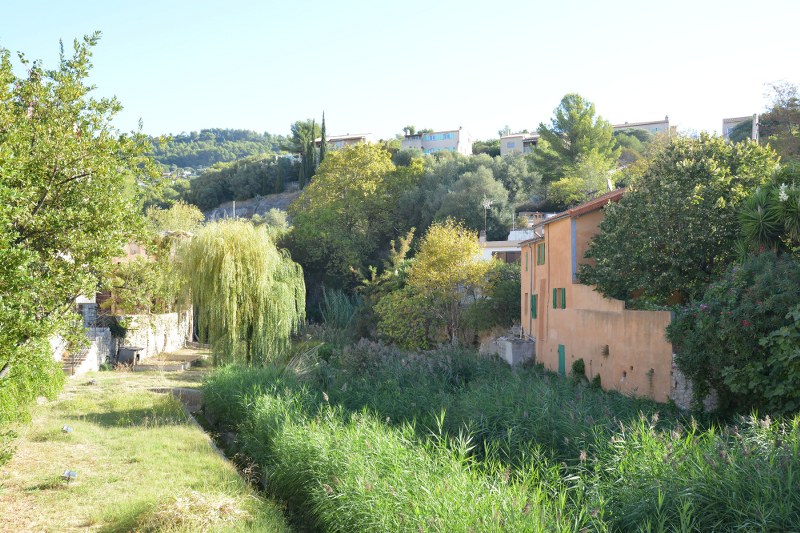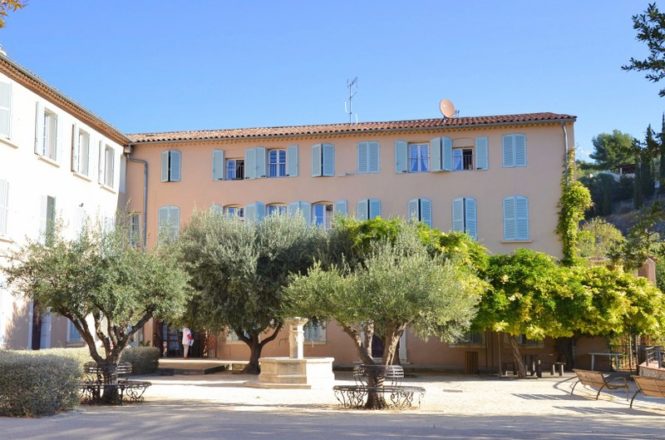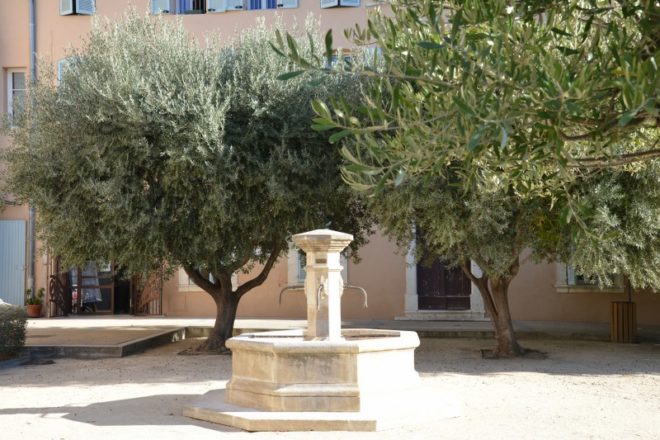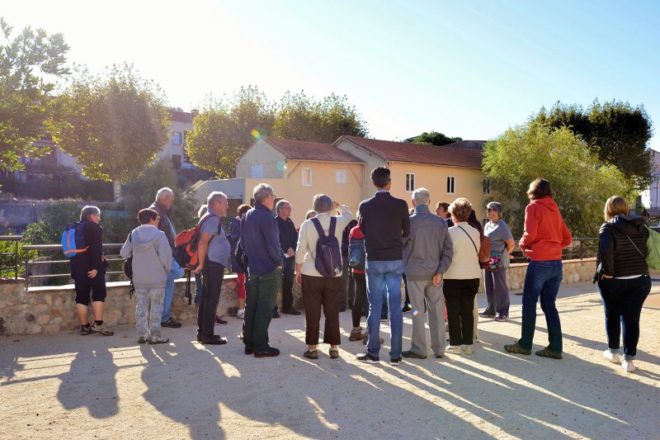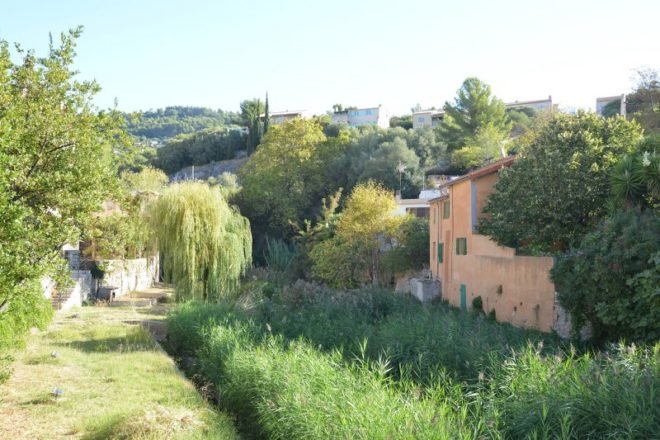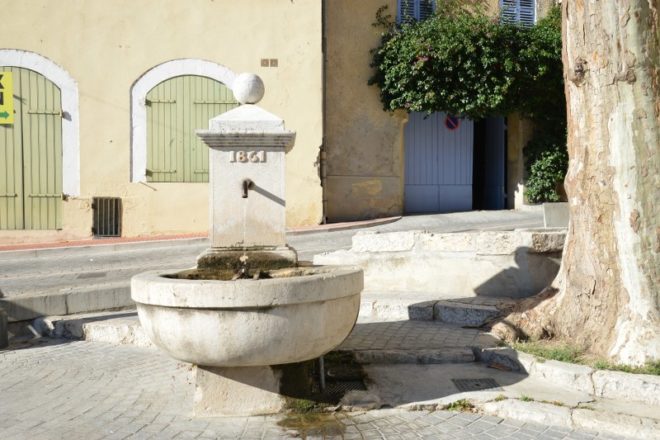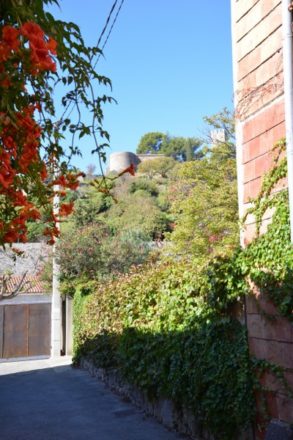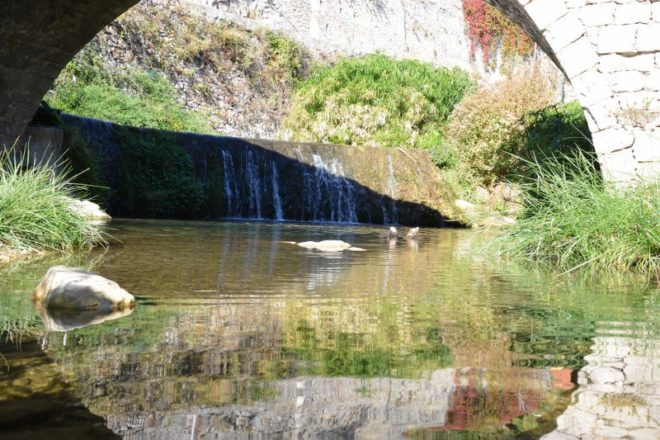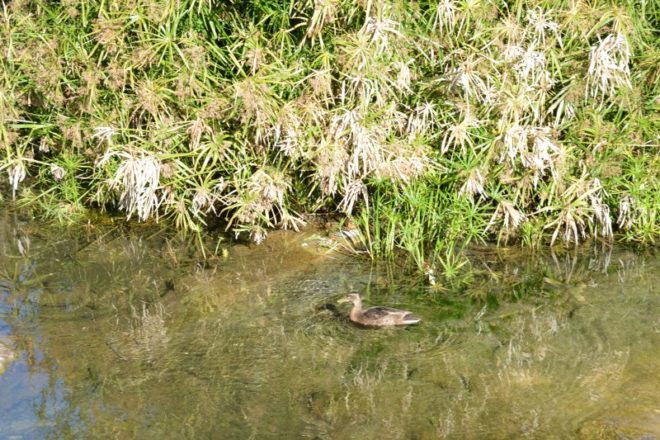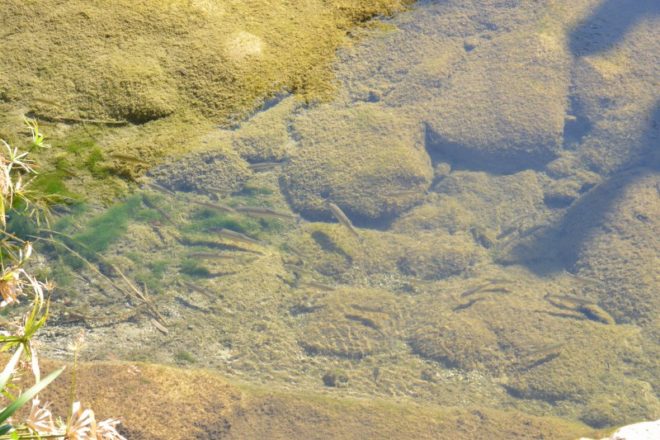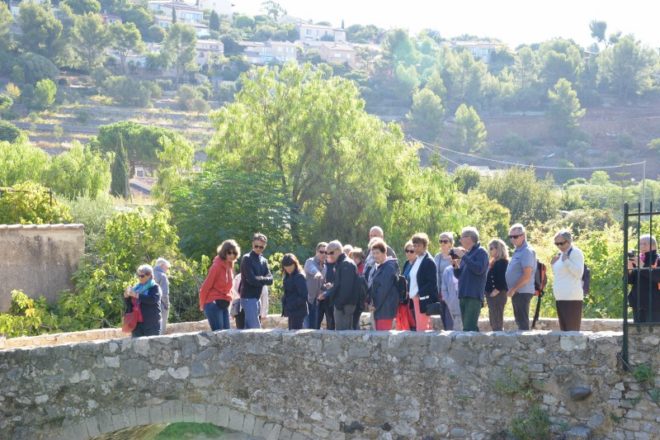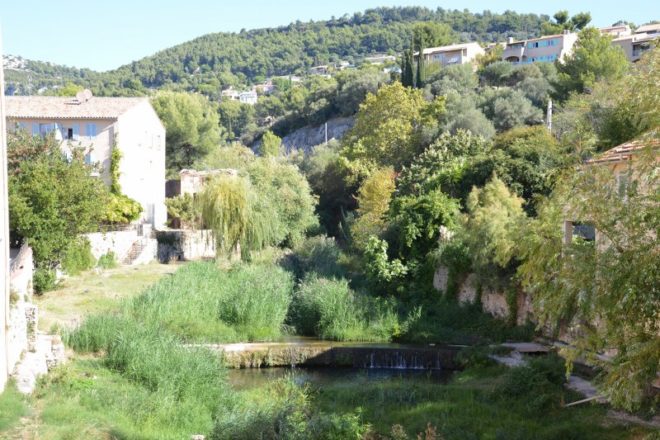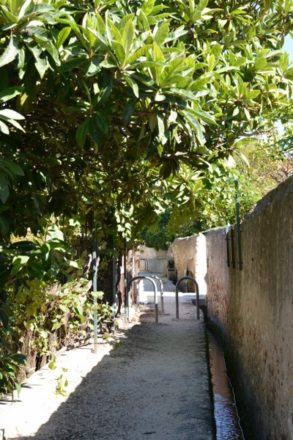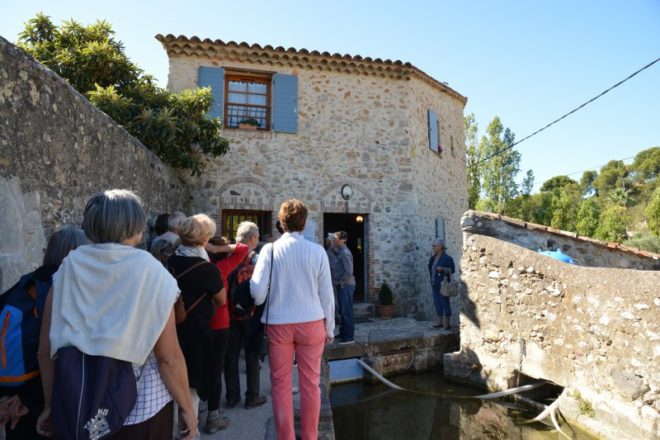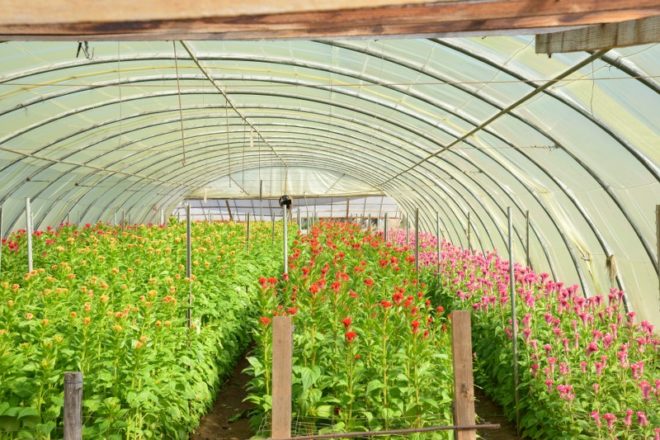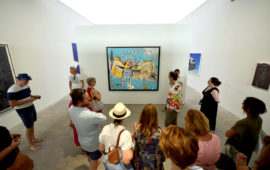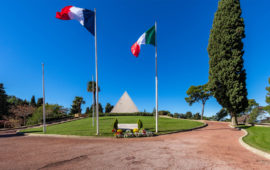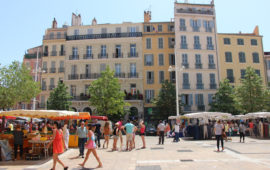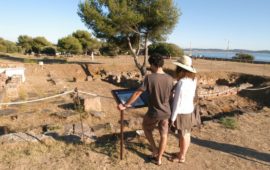A nice refreshing walk where we invite you to discover how the white waters of the Reppe have been domesticated from the Middle Ages, thanks to canal building and an ingenious irrigation system.
See you in front of the Tourist Office in Ollioules
Martin, our guide, is at the Tourist Office and welcomes us with a smile. We get together for a little explanation about the walk. There will be two parts, the first part in the “north of the town” near the wash house and the second downstream of the town centre where we will see the canal which was used to irrigation the flower plantations and the Palisson mill.
Towards the wash houses
Martin takes us through the narrow streets of Ollioules. There is a slight breeze which gives us a bit of cool air. We walk towards the Convent of the Observantins.
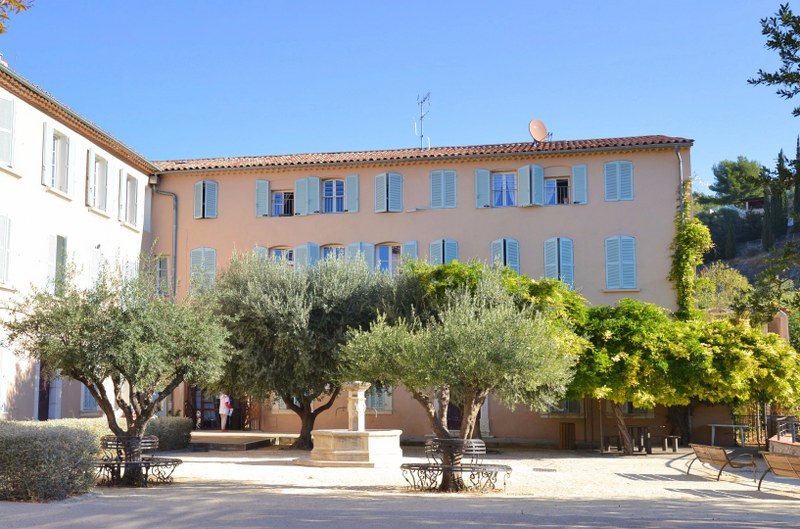
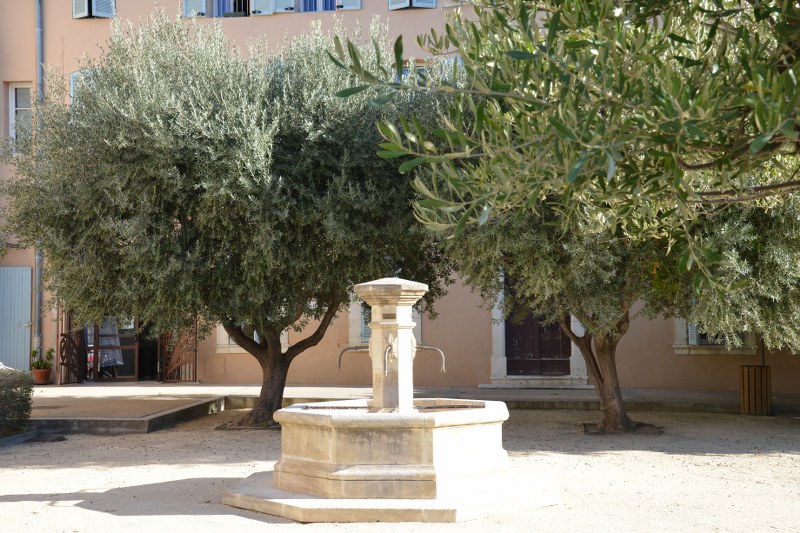
This place is magnificent, typically provençal. A lovely 15th century building with olive trees and a pretty fountain. Its courtyard is full of flowers, and brightened up with some charming white cast-iron benches. We have a lovely view on the Reppe, a perfect place to make a few memorable photos with the willow trees.
“The Reppe is a river which rises on the plain of le Beausset and goes into the sea between Six Fours and Sanary”.
In the shade of the trees, we amble towards La Bonnefont bridge before arriving at the Ratos wash house.
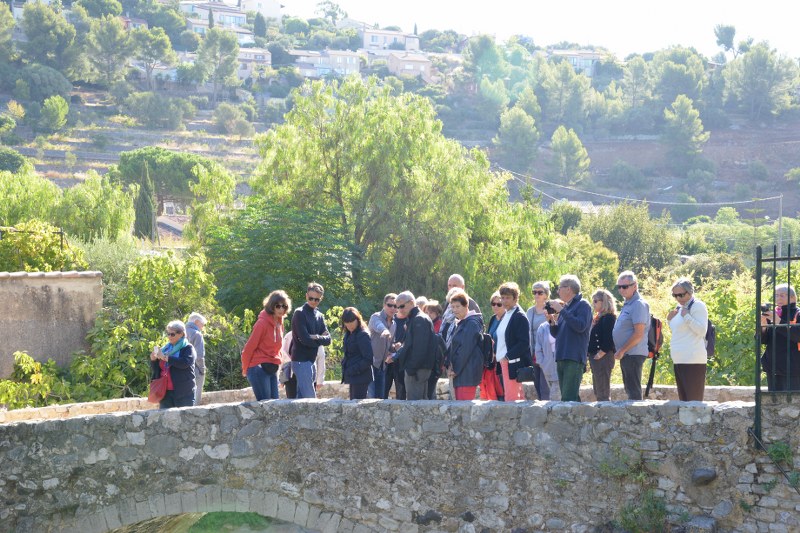
Martin seems to know everything about the history of the city and it’s wash houses. He really captures the imagination of his audience with a blend of history and anecdotes. We learn, for example, that the “washerwomen” or “bugadières” (bugade meaning clothes washing in provençal) had a lot to do, what with all the washing, tapping, brushing, drying, ironing and folding up the washing in jute canvas containers.
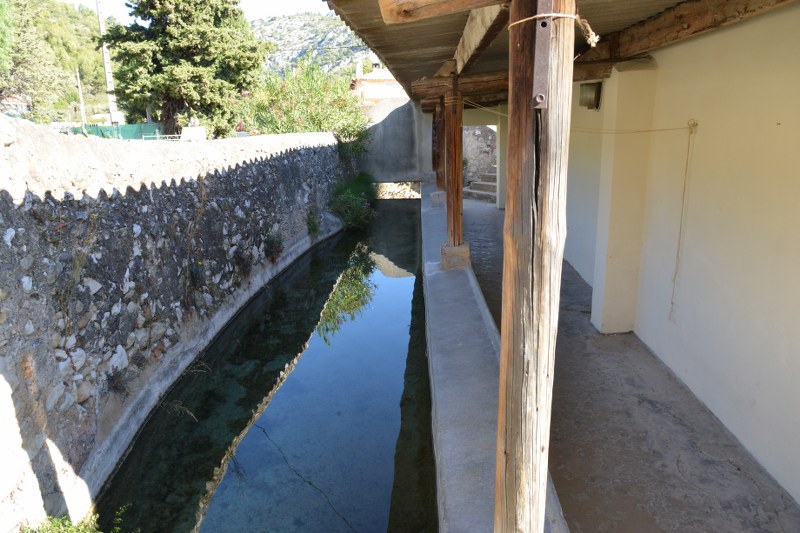
How lucky we are to have a washing machine in the 21st Century!
Do you know what they used to use to whiten the washing?
Ash!
We set off towards the La Bonnefont bridge, where we stop for a short time. We can hear the water flowing as our guide explains where the water which feeds the Reppe and the canals comes from. We are able to take a few photos of the river, where the ducks cohabit with fish in the habitat of the cyperus Provence cane species. It’s pretty and relaxing.
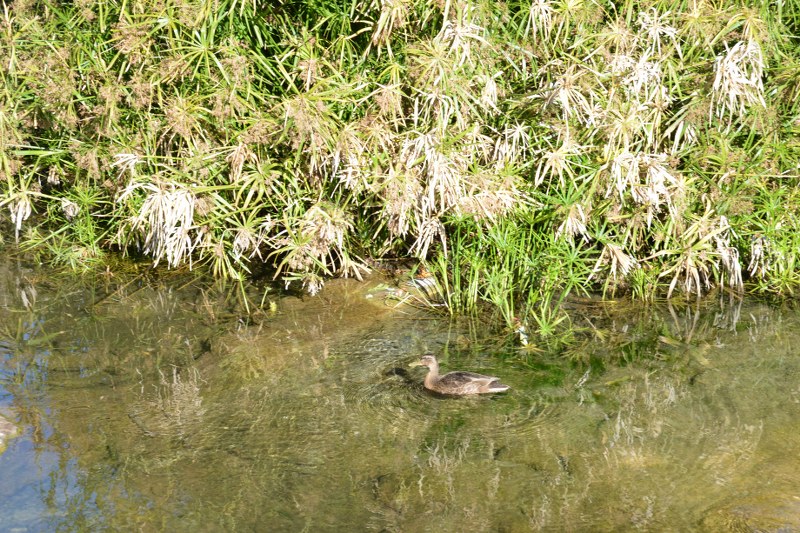
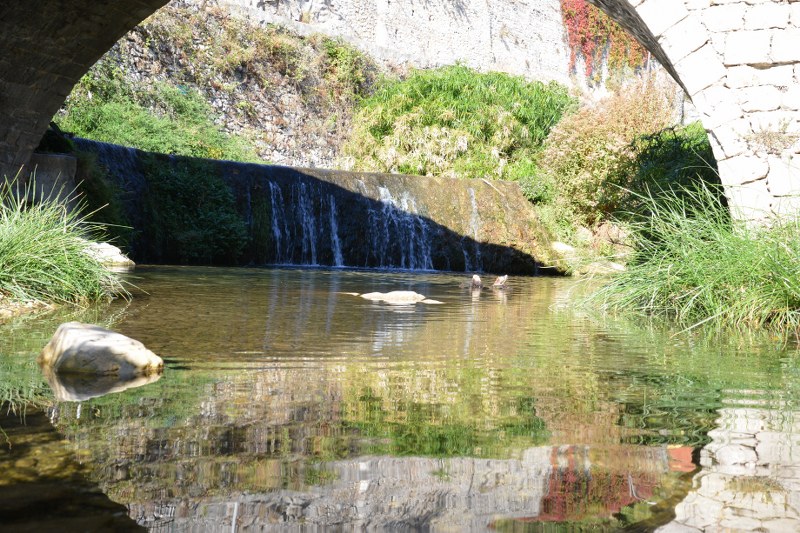
Let’s go to Palisson Mill
We carry on our visit towards Palisson Mill, staying along the canal side, behind the tourist office on the Pont du Berger lane. We take the time to observe the pretty houses full of flowers. We find out why the town of Ollioules was flower capital from 1850 to 1980. We start to imagine the fields full of flowers at the time. We pass in front of a greenhouse full of cockscomb (celosia cristata).
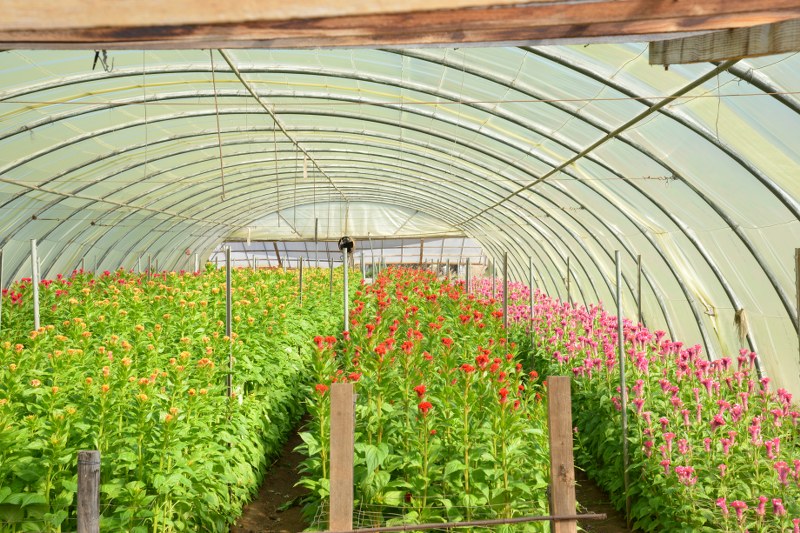
Our walk takes us to Palisson mill. A real 15th century flour mill, powered by the water from the canal.
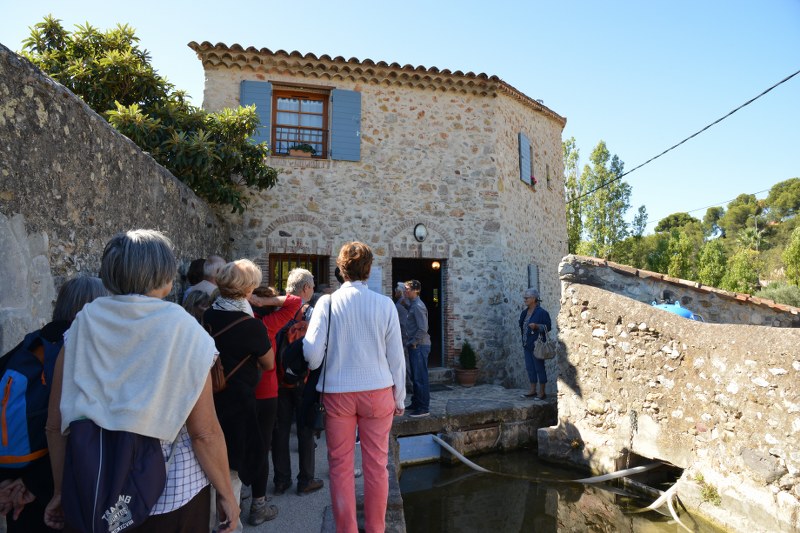
It’s a pretty building with blue shutters, and a lovely exhibition can be seen inside: grinding mills, spoon-shaped water wheels… We are also impressed by the enormous renovation work on the mill. Everything has been very well-arranged!
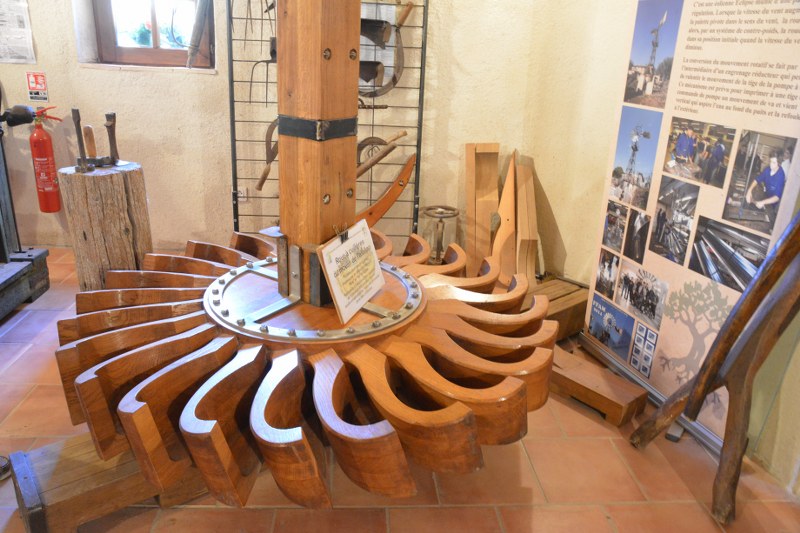
Charly, the warden, welcomes us and tells about how the mill ran at the time and how the different tools were used.
And that’s the end of our wonderful waterside visit.
It’s a very pleasant walk, with beautiful countryside and who would have thought that “water” would be so present and that it would have so much impact in this small town full of Provençal charm.
A very interesting visit – I was born in Ollioules but I didn’t know the history of the canal.
I was fascinated by the Palisson mill. I fell in love with it a few years ago but I thought it was a house!
It was a very rewarding visit and Martin is a wonderful guide.
Francine.

